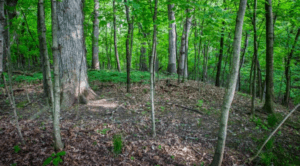
Conservation Land Trusts – For the Benefit of All
A conservation land trust is a non-profit organization that protects land of environmental, scenic, historical, or agricultural value. Conservation land trusts have at the core of their mission to preserve and restore our natural landscapes while providing benefits for landowners and communities.
Conservation land trusts also play a significant role in helping to mitigate the negative impacts of climate change. They use a variety of tools to help landowners voluntarily protect their land. They are widespread. The Land Trust Alliance, a national conservation organization in the United States, has 948 members that have protected over 60 million acres.
What are the benefits?
Conservation land trusts provide several environmental, economic, and social benefits. The lands protected by conservation land trusts help provide clean water and air, protect habitat for wildlife and plants, preserve soil, and help mitigate the impacts of climate change.
Some land trusts work in urban locations, creating community gardens, protecting green spaces, and planting trees that cool air temperatures and reduce air pollution. Conservation helps with carbon sequestration, prevents significant greenhouse gas emissions, provides habitats for wildlife, and builds communities resilient to the effects of climate change.
The economic aspects of conservation land trusts can be interesting for the original owners of the land as well as for the surrounding community. For the landowner, there are the tax benefits derived from the donation of the land and the reduced costs of maintaining the land. For the surrounding community, two potential benefits are higher residential land values and avoided municipal service and infrastructure costs.
Essentially, it’s about the cost of community services provided to development, especially new development, versus the tax revenue gained from the development. Open space preservation is also a good land use planning tool to manage and direct development and growth into preferred areas. Sometimes, there are tourism and recreation benefits from outdoor activities like hiking, fishing, birdwatching, and the associated boons to the local economy.
Finally, there are the social benefits derived from land trusts. Many conservation lands provide trails and parks for public enjoyment. They accomplish cultural and historic preservation by protecting historically significant landscapes and indigenous lands. The lands can serve as a resource for schools, scientists, and environmental education programs. Community engagement is achieved by encouraging local stewardship and volunteerism in conservation efforts.
How do they work?
Conservation land trusts work for private and public land. Many options are available to help landowners preserve, protect, and restore land. Two of the most popular options are fee simple and conservation easements. The fee simple option has the conservation land trust owning and managing the donated or sold land.
A conservation easement is a legal agreement between landowners and a land trust to permanently limit the use of an area to protect conservation values. Landowners can either sell or donate the easement to land trusts. They retain ownership of the land, can sell it in the future, or pass it on, but the conservation restrictions remain forever. Lands often remain open for hiking, recreation, and environmental education programs.
It is important to note that conservation land trusts can be accredited. Accreditation is awarded to land trusts meeting the highest national excellence and conservation permanence standards. The Land Trust Accreditation Commission, an independent program of the Land Trust Alliance, a national conservation organization in the United States, runs the accreditation program.
An example of how a conservation land trust works is the efforts of The Conservation Foundation (TCF) of northeastern Illinois with the Dayton Bluffs area or the Belrose Farm.
Dayton Bluffs Preserve is a 253-acre natural area located at 2997 Illinois Route 71, just north of Ottawa, Illinois. It is considered an ecological and archaeological wonderland. Owned by The Conservation Foundation (theconservationfoundation.org) and leased to the City of Ottawa, the preserve features approximately 154 acres of woodlands and 100 acres of restored prairie.
It all started with a phone call from one of TCF’s members telling them they had seen a For Sale sign on this property, which had been slated for development but was also identified as a natural gem on TCF’s Lower Fox River Land Conservation Plan. That phone call was the first step in saving this precious natural place for future generations.
With generous funding from the Illinois Clean Energy Community Foundation, Grand Victoria Foundation, and the Hamill Family Foundation, TCF was able to purchase the Dayton Bluffs Preserve for $2.1 million. On July 31, 2013, TCF became the owner of Dayton Bluffs. Through a very creative partnership agreement, TCF leases the Dayton Bluffs Preserve to the City of Ottawa, which manages it as a public preserve. The land was designated as an Illinois Land and Water Reserve by the Illinois Nature Preserves Commission in 2014.
TCF owns the land and is responsible for its initial restoration and long-term ecological management. The City of Ottawa is responsible for daily access, security, and general maintenance. The all-volunteer Friends of the Dayton Bluffs Preserve helps maintain the natural areas on the property.
What can a landowner do?
Many landowners would like to sell or donate their property to local open space agencies but don’t know who to call. It is recommended that they start with their local conservation organization. Most of these organizations have been working with public agencies for years and can connect interested landowners with the right people at the appropriate agencies. The Land Trust Alliance provides a means to find a land trust by name or location.
Article By Steve Stawarz
Advisory Council Member, The Conservation Foundation